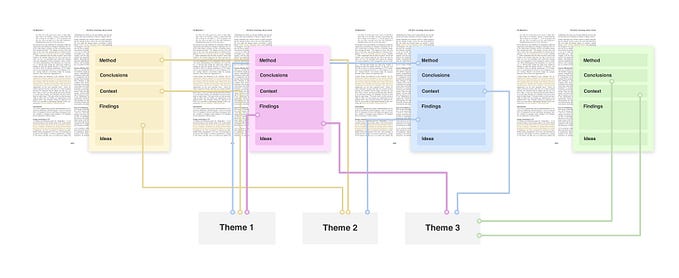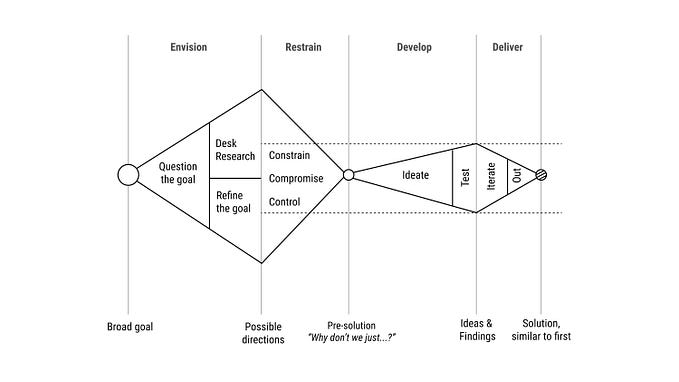Standardization in UX: the 5-minute checkout
What happens when standards face reality?
An experienced designer would probably start with a mind-blowing quote “[mind-blowing quote here]” from a cool book that I’m too lazy to read. As you might have notices, this is slowly becoming a standard in most articles; good and bad. That’s the thing with standardization throughout the world, values are mixed and mushed together for the sake of speed and imitation based success.

Standardized libraries, components, pages, persona templates, idea matrix, demo presentations, ads, campaigns, deployment plan, questionnaire and many more. It almost becomes more important to be able to replicate and scale something than the value of the thing itself.
300 Seconds
A friend asked me about UX design jobs in Amsterdam. Since I have been applying for more than 100 jobs for two months and went through a few interviews, I helped. There was one sentence in a job description that formed a strong enough neural path in my brain to motivate me to write this. It sounded like this:
“… our vision: to create an experience for our customers to buy and sell in 5 minutes with a smile.”
The future Product Designer would have to achieve this goal for a Dutch e-commerce page called Marktplaats, part of the e-bay group. Both me and my friends are constantly using this website, thus I am somehow aware of its complexity. That's why I instantly imagined myself in that position, with the manager standing in front of he saying the word: “…5 minutes with a smile” . It felt like spending 1100$ on a phone — completely unnecessary.
Let me tell you why — maybe I’m totally wrong, maybe I’m not.
Marktplaats?
The name means market place in English, describing perfectly what the website aims for. It’s a place where both companies and individuals can sell or buy pretty much anything you can imagine from LEDs to beach houses.

It gets even more complex though, the market place is opened to all types of sellers: individuals who sell a product once in a while, people who make a living out of reselling things, people offering services, companies posting their websites, or companies who sell directly in there. There's also the possibility to buy immediately from the website, similar to e-bay, which seems new.


Then, one can participate in bidding for a product, open a company’s website, chat with a company representative in Marktplaats or chat with a another person to eventually get the product. Oh, and the fake ads too.


I'm certain there is a clearly designed set of rules applied to all participants in the market, but it still looks like they applied one standard design for all. I will (maybe wrongly) assume that it happened for the sake of quick delivery, or lack of understanding their own website. However, the moment you land in a product page, you immediately notice whether the seller is another person or a company; and it matters.


This is however, something that people learn in time; by people I mean myself, my friends and the Dutch guys that helped us getting familiar with the website in the last two months. Thus, a lot of us ended up finding good products, only to find out later that they were sold by companies that sometimes charged more, were out of stock or slow in responses. The idea of looking for something in this market place is to also re-use things;
“If I’m looking for a new product I would immediately open (listing a few popular e-commerce websites in the Netherlands)” — Dutch individual.
Maybe they didn't realize the product will be used in so many different ways. Maybe they thought it is not important for people to visualize these different use cases. I don't even think it's a matter of performing user studies to understand people's perception; it's a matter of transparency and communication towards potential buyers. This is an example of standards applied and created, not as a consequence of patterns, but as a need of creating a single solution for all.

An interesting thing happens next; the classic checkout elements that people have to gradually fill in, as their shipping address, delivery method, payment method, voucher codes are replaced by conversations, negotiations and trust.
Putting it in a almost robotic way: one would show interest in the product and once both parties agree, they set a time, a place and a payment method (including the online one provided by the website), followed by the meeting transfer of goods. A process like this, that involved human to human interaction can last from a few minutes to a few days, obviously, depending on a variety of factors.

I bet you’re starting to see my point now…5 minute with a smile, right ? Browsing, searching, filtering, sorting and comparison were left out on purpose. To all this, add the multitude of human interactions and multi-cultural environment of Netherlands and the amount of people using google translate to navigate. It just seems unnecessary.

Even if one would improve the website from a usability perspective, the perception of it, being a community based market may not change. People will be able to reach a product faster and easier , easily under 5 minutes— that’s great. However, bidding will still be a slow process and so will the purchase of a bulldozer or a house. I wonder then, where does the need of 5 minutes come from ? Why should we compare and turn a website into another product selling machine? Isn’t it better to modulate the amount of things people buy, by giving them more time to think ? Isn’t it nicer to have people to meet and sometimes to get to know the story behind the thing they are buying from the owner ?
Maybe they should start thinking about facilitating these human processes of negotiating, for example through a fun micro-interaction.


It’s just a job description, I am sure the people working there have it all figured out and this 5 minutes is more of a teaser. I hope.
Ask
We all have an incredible capacity to come up with ideas, solutions and mechanisms, why should we force ourselves to think in terms of standards right from the start ? Always question the standard, it should be the consequence of repetitive work, ideas, patterns, not a one-for all solution for the sake of delivery and deadlines.
“Think out of the box” they all say, but make sure it will fit in another box though, we need to pack it and ship it a.s.a.p.






